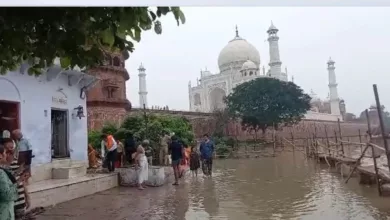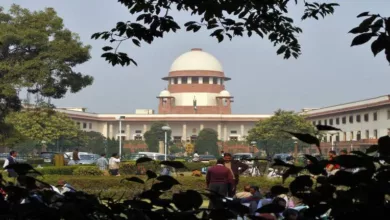
Flood situation in Assam remains grim, around 1 lakh affected
The flood situation in Assam continues to be severe, with approximately 1 lakh people being affected across 10 districts, as reported by the Assam State Disaster Management Authority (ASDMA). The districts affected by the floods include Sonitpur, Chirang, Darrang, Dhemaji, Dibrugarh, Golaghat, Lakhimpur, Majuli, Sivasagar, and Udalguri.
The floods have caused significant disruptions and hardships for the affected population. The rising water levels have resulted in the inundation of residential areas, agricultural fields, and infrastructure. People have been forced to evacuate their homes and seek temporary shelter in relief camps set up by the authorities.
The Assam State Disaster Management Authority, other relevant agencies, and local authorities are actively involved in the rescue and relief operations. Efforts are being made to provide essential supplies, including food, clean water, and medical assistance, to the affected individuals.
The situation calls for continued vigilance and swift action to mitigate the impact of the floods. Authorities closely monitor river water levels and keep the public informed about the latest developments. Efforts are also underway to assess the extent of damage caused by the floods and initiate measures for recovery and rehabilitation.

The government, non-governmental organizations (NGOs), and community volunteers work together to support the affected population and ensure their safety and well-being. All stakeholders must collaborate effectively and coordinate their efforts to address the immediate needs of the affected people and provide them with necessary assistance.
The state government, along with relevant agencies, will continue to closely monitor the situation and take appropriate measures to mitigate the impact of the floods. Timely intervention, adequate resources, and support from all sectors of society are essential to address the challenges posed by the floods and provide relief to the affected communities.
Among the affected districts in Assam, Golaghat has witnessed the most significant impact, with nearly 29,000 people being affected by the floods. The district of Dhemaji follows closely behind with around 28,000 people involved, while Sivasagar has reported approximately 13,500 people affected by the deluge, according to the bulletin released by the Assam State Disaster Management Authority (ASDMA).

The floodwaters have inundated residential areas, agricultural fields, and infrastructure in these districts, leading to the displacement of a significant number of residents. The affected individuals are facing challenges in terms of access to basic necessities such as food, clean water, and shelter. Relief efforts are underway to provide them with the necessary support and assistance.
The district administrations, along with local authorities and disaster management teams, are working tirelessly to rescue stranded individuals, provide relief materials, and set up temporary shelters for those displaced by the floods. These teams also conduct damage assessments and identify areas that require immediate attention.
Efforts are being made to ensure the safety and well-being of the affected population. Medical teams are providing healthcare services, and relief camps have been set up to accommodate those forced to leave their homes. The state government, with the support of various agencies, is coordinating relief operations and deploying resources to address the situation.
It is crucial for authorities, relief organizations, and communities to work in tandem to minimize the impact of the floods and support the affected individuals. Continuous monitoring of the situation, timely intervention, and effective coordination among all stakeholders are essential to mitigate the hardships faced by the affected population and facilitate their recovery and rehabilitation.The flood situation in Assam has worsened, with the number of affected people rising to nearly 1.08 lakh in 12 state districts as of Saturday. The floods have led to the displacement of many residents, who are seeking refuge in relief camps set up by the administration.
Currently, there are 17 relief camps operational in two districts, providing shelter to around 2,941 individuals who have been forced to leave their homes. These camps offer a safe space for those affected by the floods, ensuring that they have access to food, water, healthcare, and other essential facilities.
Additionally, the administration has established 49 relief distribution centres across six districts. These centres serve as distribution points for relief materials, including food, clean water, and essential supplies. The distribution centres play a crucial role in ensuring that the affected population receives the necessary support and assistance during this challenging time.
The district authorities, along with disaster management teams and other relevant agencies, are working tirelessly to provide relief and support to those affected by the floods. Their efforts include rescue operations, evacuation of stranded individuals, distribution of relief materials, and providing medical aid.
The situation in the flood-affected areas is being closely monitored, and efforts are being made to promptly address the needs of the affected population. The government and various organizations are working together to ensure that relief operations are efficiently carried out and that the affected individuals receive the help they require.

It is essential for people in the affected areas to stay alert and follow the instructions provided by local authorities. Taking necessary precautions and adhering to safety guidelines can help minimize the risks associated with the floods. The government and disaster management authorities continue to work towards providing assistance and ensuring the well-being of the affected people.The impact of the floods in Assam is extensive, with 371 villages currently submerged under water. The flooding has resulted in significant damage to crop areas, affecting approximately 3,618.35 hectares of agricultural land across the state. This has severe implications for farmers and the overall agricultural sector in the affected regions.
In addition to the widespread inundation, several areas have also experienced substantial erosion. The districts of Baksa, Bongaigaon, Chirang, Kokrajhar, Lakhimpur, Nalbari, Udalguri, and Tinsukia have witnessed massive erosions caused by the force of the flooding waters. Decay poses a significant threat to the stability of riverbanks, infrastructure, and the livelihoods of the communities residing in these areas.
The government and disaster management authorities are working diligently to assess the damages caused by the floods and provide necessary support to the affected communities. Efforts are underway to provide relief, including assistance for crop damage and rehabilitation measures to address the erosion challenges. The authorities must collaborate with relevant stakeholders to implement effective measures to mitigate the impact of the floods, support affected communities, and restore normalcy in the affected areas.
The situation calls for continued monitoring, proactive measures, and efficient coordination among various agencies to address the immediate and long-term consequences of the floods. By prioritizing relief and rehabilitation efforts, the government aims to minimize the hardships faced by the affected population and facilitate their recovery.
It is important for residents in the flood-affected areas to stay updated on the latest information provided by the authorities and follow safety guidelines. In times of such emergencies, community support and resilience play a vital role in overcoming the challenges posed by natural disasters.The floods in Assam have caused significant damage to infrastructure in multiple districts. The floodwaters have adversely affected embankments, roads, bridges, and other crucial infrastructure. This not only disrupts transportation and connectivity but also poses risks to the safety and livelihoods of the affected communities.
The Brahmaputra River, a major river in the region, is flowing above the danger mark in Dhubri, Tezpur, and Neamatighat. The rising water levels of the river indicate the severity of the flooding and the challenges faced by the communities residing along its banks. Additionally, the Dikhou tributary in Sivasagar is also experiencing a surge in water levels, exacerbating the flood situation in the area.
The damage to infrastructure further hampers relief and rescue operations, making it difficult for authorities to reach and provide assistance to the affected communities. Restoration and repair work will be essential to ensure the swift recovery of transportation networks and the functioning of vital services.
Efforts are being made by the government and disaster management authorities to assess the extent of the damage and undertake necessary measures to repair and restore infrastructure. It is crucial to prioritize the repair of embankments, roads, bridges, and other critical infrastructure to facilitate the movement of relief supplies, aid in rescue operations, and support the recovery and rehabilitation of affected communities.
The continuous monitoring of river levels and timely dissemination of information to the public is crucial for ensuring the safety of residents in flood-prone areas. Residents should remain vigilant, follow instructions from local authorities, and take necessary precautions to protect themselves and their property.
Addressing the challenges posed by the damaged infrastructure requires a coordinated effort involving government agencies, community participation, and support from various stakeholders. By working together, it is possible to overcome the adverse impacts of the floods and support the affected communities in their journey towards recovery and resilience.






